Eltako FHK61U-230V Handleiding
Eltako
Niet gecategoriseerd
FHK61U-230V
Bekijk gratis de handleiding van Eltako FHK61U-230V (4 pagina’s), behorend tot de categorie Niet gecategoriseerd. Deze gids werd als nuttig beoordeeld door 156 mensen en kreeg gemiddeld 4.6 sterren uit 78.5 reviews. Heb je een vraag over Eltako FHK61U-230V of wil je andere gebruikers van dit product iets vragen? Stel een vraag
Pagina 1/4

1 NO contact potential free 10A/250V AC.
Only 0.8 watt standby loss. Encrypted
wireless, bidirectional wireless and
repeater function are switchable.
For installation.
45 mm long, 45 mm wide, 33mm deep.
Supply voltage 230 V.
If a power failure occurs, the switching
state is retained. If a power failure occurs
repeatedly, the device is switched off in a
defined sequence.
After installation, wait for short automatic
synchronisation before the switched
consumer is connected to the mains.
This heating/cooling relay evaluates the
information from wireless temperature
controllers or sensors. Possibly supple-
mented by window/door contacts, motion
detector, Hoppe window handles and
wireless pushbuttons.
Starting in production week 11/14, you
can teach in encrypted sensors. You
can switch on bidirectional wireless
and/or a repeater function.
Every change in state of the contact is
confirmed by a wireless telegram. This
wireless telegram can be taught-in into
other actuators and the GFVS software.
Especially into a FSR61 to synchronously
switch a heat circulating pump with the
valves.
GB
Only skilled electricians may install
this electrical equipment otherwise
there is the risk of fire or electric
shock!
Temperature at mounting location:
-20°C up to +50°C.
Storage temperature: -25°C up to +70°C.
Relative humidity:
annual average value <75%.
Wireless actuator
Heating/cooling relay
FHK61U-230 V
30 100 050 - 2
valid for devices from production week
11/14 (see bottom side of housing)
Function rotary switches
Top rotary switch for operating modes:
H1: Heating operation with PWM control
at T = 4 minutes. (suitable for valves
with thermoelectric valve drive)
H2: Heating operation with PWM control
at T = 15 minutes. (suitable for valves
with motor-driven valve drive)
H3: Heating operation with 2-point
control.
K1: Cooling operation with PWM control
at T = 15 minutes.
K2: Cooling mode with 2-point control.
Switchover is visualised by LEDs flashing.
Bottom rotary switch for adjustable
hysteresis and PWM influence:
Left stop: lowest hysteresis 0.5°.
Middle position: hysteresis 2.5°.
Right stop: largest hysteresis 4.5°.
Inbetween, divisions in steps of 0.5°
visualised by LEDs flashing.
Two-point control mode:
The hysteresis rotary switch sets the
required difference between the switch-on
and switch-off temperatures.
When the 'actual temperature >= reference
temperature', the device is switched off.
When the 'actual temperature <=
(reference temperature - hysteresis)', the
device is switched on. The signs are the
opposite in cooling mode.
PWM control mode:
The hysteresis rotary switch set the required
temperature difference at which the device
is switched on at 100%. When the 'actual
temperature >= reference temperature',
the device is switched off.
When the 'actual temperature <=
(reference temperature - hysteresis)', the
device is switched on at 100%.
If the 'actual temperature' lies between the
'reference temperature - hysteresis' and
the 'reference temperature', the device is
switched on and off with a PWM in steps
of 10% depending on the temperature
difference.
The lower the temperature difference, the
shorter the switch-on time. As a result of
the settability of the 100% value, the
PWM can be adapted to the heater size
and inertia. The signs are the opposite in
cooling mode.
In heating mode, the frost protection
function is always enabled. As soon as
the actual temperature drops below 8°C,
the temperature is controlled in the
selected operating mode to 8°C.
If one or several windows are open, the
output remains off provided the window/
door contacts FTK or Hoppe handles
are taught-in. In heating mode, however,
the frost protection remains enabled.
As long as all taught-in motion detectors
FBH detect no motion, the device is
switched to setback mode. In heating
mode, the reference temperature is set
back by 2°; in cooling mode, it is raised
by 2°. As soon as a motion detector
signals movement again, the device is
switched to normal mode.
When a is taught-in,wireless pushbutton
the assignment of the 4 keys is assigned
with the following fixed functions: Top
right: Normal mode (can also be enabled
by timer). Bottom right: Night setback
mode by 4°; in cooling mode, raised by
4° (can also be enabled by timer). Top
left: Setback mode by 2°, in cooling mode,
raised by 2°. Bottom left: Off (in heating
mode, frost protection enabled; in cooling
mode permanent off). If the motion
detector and wireless pushbutton are
taught-in at the same time, the last tele -
gram received is always the one that is
valid. A motion detector therefore switches
off a setback mode selected by wireless
pushbutton when a movement is detected.
Malfunction mode:
If a temperature sensor fails to receive a
wireless telegram for longer than 1 hour,
the LED lights up and the device switches
to fault mode. In heating mode, the device
remains switched on for 1.2 minutes at H1
and switched off for 2.8 minutes. When
set to H2 and H3 the 'ON' time is 4.5
minutes and 'OFF' time is 10.5 minutes.
The device is switched off in cooling
mode. When a wireless telegram is
again received, the LED goes out and the
device switches back to normal mode.
The LED performs during the teach-in
process according to the operation
manual. It shows wireless control
commands by short flickering during
operation.
Typical connection
Technical data
Rated switching capacity 10A/250 V AC
Standby loss (active power) 0.8 W
Teaching-in wireless sensors in wire-
less actuators
All sensors must be taught-in in
actuators so that they can detect and
executetheir commands.
Teaching-in actuator FHK61U-230 V
The teach-in memory is empty on
delivery from the factory. To ensure that
a device was not previously taught-in,
clear the memory completely:
Turn the upper rotary switch to CLR.
The LED flashes at a high rate. Within
10 seconds, turn the lower rotary switch
three times to right stop (turn clockwise)
and back again. The LED stops flashing
and goes out after 2 seconds. All taught-
in sensors are cleared; the repeater and
the confirmation telegrams are switched
off.


Clear single taught-in sensors:
Turn the upper rotary switch to CLR. The
LED flashes at a high rate. Operate the
sensor. The LED goes out.
If all the functions of an encrypted sensor
are cleared, teach-in must be repeated
as described under
Teach-in encrypted
sensors.
Teaching-in sensors:
1. Set the bottom rotary switch to the
required teach-in function:
The flashing of the LED as soon as a
new setting range has been reached
when turning the rotary switch helps
to find the desired position reliably.
Set FTR, FUTH, 4 way wireless push-
button, FBH, FTK or Hoppe window
handles to right stop (4.5).
On FTF, FAFT and FIFT, the position of
the rotary switch defines the reference
temperature during the teach-in
process. In middle position (2.5) the
reference temperature is 21°C. It can
be set in steps of 1° from 17°C at left
stop (0.5) to 25°C at right stop (4.5).
2.Set the top rotary switch to LRN.
The LED flashes at a low rate.
3.Operate the sensor to be taught-in.
The LED goes out.
Only one temperature sensor can be
taught-in at one time. During teach-in, a
sensor that is already taught-in is auto-
matically erased.
After teach-in, the rotary switches are set
to the required function.
To prevent unintentional teach-in, teach
in pushbuttons by 'double-clicking'
(pressing rapidly twice in succession).
Within 2 seconds, turn the upper rotary
switch three times to right stop LRN (turn
clockwise). The LED flashes 'double'.
'Double-click' the pushbutton you want
to teach in. The LED goes out.
To change back to teach-in with a 'single
click', turn the upper rotary switch 3 times
to right stop LRN (clockwise) within
2 seconds. The LED flashes at a low
rate.
After a power supply failure, the device
reverts automatically to teach-in with a
'single click'.
.
You can teach in unencrypted and
encrypted sensors.
Teach in encrypted sensors:
1. Turn the upper rotary switch to LRN.
2. Turn the lower rotary switch three
times to left stop (anticlockwise).
The LED flashes very rapidly.
3. Within 120 seconds, enable sensor
encryption. The LED goes out.
Caution: Do not switch off the power
supply.
4. Then teach in the encrypted sensor as
described in
Teach in sensors.
To teach in other encrypted sensors,
turn the upper rotary switch briefly away
from position LRN and then turn it to 1.
With encrypted sensors, use the 'rolling
code', i.e. the code changes in each
telegram, both in the transmitter and in
the receiver.
If a sensor sends more than 50 tele-
grams when the actuator is not enabled,
the sensor is no longer recognised by the
enabled actuator and you must repeat
teach-in as 'encrypted sensor'. It is not
necessary to repeat the function teach-in.
Switching on/off repeater:
If the supply voltage is also applied to
the right-hand terminal when the power
supply is connected, the repeater is
switched on/off. When the power supply
is switched on, the LED lights up for
2 seconds = repeater off (as-delivered
state) or 5 seconds = repeater on to
indicate the state.
Switch-on confirmation telegrams:
For deliveries ex-works the confirmation
telegrams are switched-off. Set the upper
rotary switch to CLR. The LED flashes
nervously. Now within 10 seconds turn
the bottom rotary switch 3 times to the
left (anticlockwise) and then back away.
The LED stops flashing and goes out
after 2 seconds. The confirmation tele-
grams are switched-on.
Switch-off confirmation telegrams:
Set the upper rotary switch to CLR.
The LED flashes nervously. Now within
10 seconds turn the bottom rotary switch
3 times to the left (anticlockwise) and
then back away. The LED goes out
immediately. The confirmation telegrams
are switched-off.
Teach-in confirmation telegrams of this
actuator in other actuators or GFVS
software:
By pushing the right terminal with 230V,
the contact is switched on and off and the
corresponding wireless telegram is sent.
When an actuator is ready for
teach-in (the LED flashes at a
low rate), the very next
incoming signal is taught-in.
Therefore, make absolutely
sure that you do not activate
any other sensors during the
teach-in phase.
!
EnOcean wireless
Frequency 868.3MHz
Transmit power max. 10 mW
Hereby, Eltako GmbH declares that the
radio equipment type FHK61U-230 V is
in compliance with Directive
2014/53/EU.
The full text of the EU declaration of
conformity is available at the following
internet address: eltako.com
Must be kept for later use!
Eltako GmbH
D-70736 Fellbach
Technical Support English:
Michael Thünte +49 176 13582514
thuente@eltako.de
Marc Peter +49 173 3180368
marc.peter@eltako.de
eltako.com
13/2018 Subject to change without notice.
Product specificaties
| Merk: | Eltako |
| Categorie: | Niet gecategoriseerd |
| Model: | FHK61U-230V |
Heb je hulp nodig?
Als je hulp nodig hebt met Eltako FHK61U-230V stel dan hieronder een vraag en andere gebruikers zullen je antwoorden
Handleiding Niet gecategoriseerd Eltako
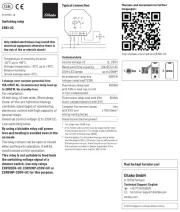
14 April 2025
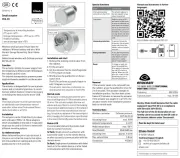
14 April 2025

13 Maart 2024

21 Februari 2024

21 Februari 2024

21 Februari 2024

21 Februari 2024

20 Februari 2024

20 Februari 2024

20 Februari 2024
Handleiding Niet gecategoriseerd
- WAGAN
- Sherlock
- Tempo
- Magnat
- Evenflo
- VirtuFit
- Vox
- Livarno Lux
- Hikmicro
- Seville Classics
- Wachendorff
- PDP
- Sabco
- Mio
- Raclet
Nieuwste handleidingen voor Niet gecategoriseerd
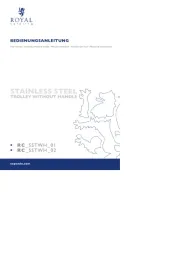
18 September 2025

18 September 2025
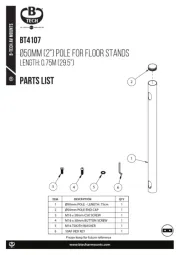
18 September 2025
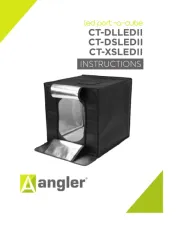
18 September 2025
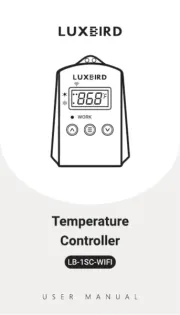
18 September 2025
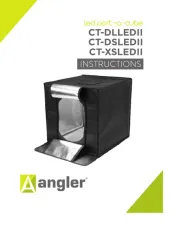
18 September 2025

18 September 2025

18 September 2025

18 September 2025

18 September 2025